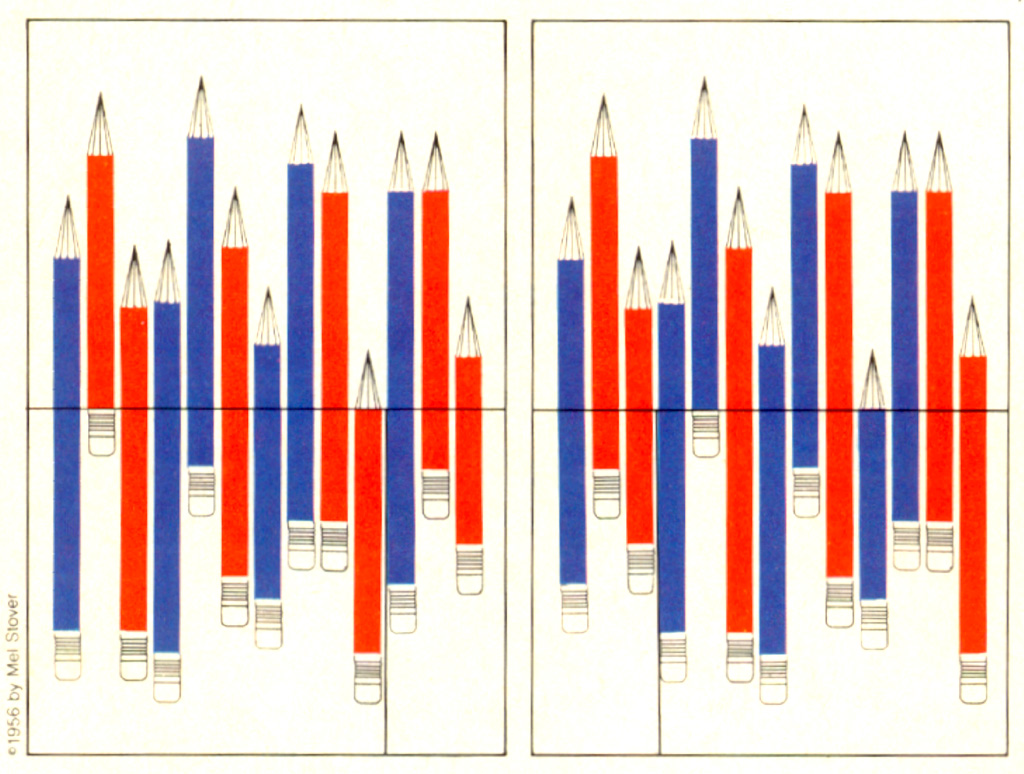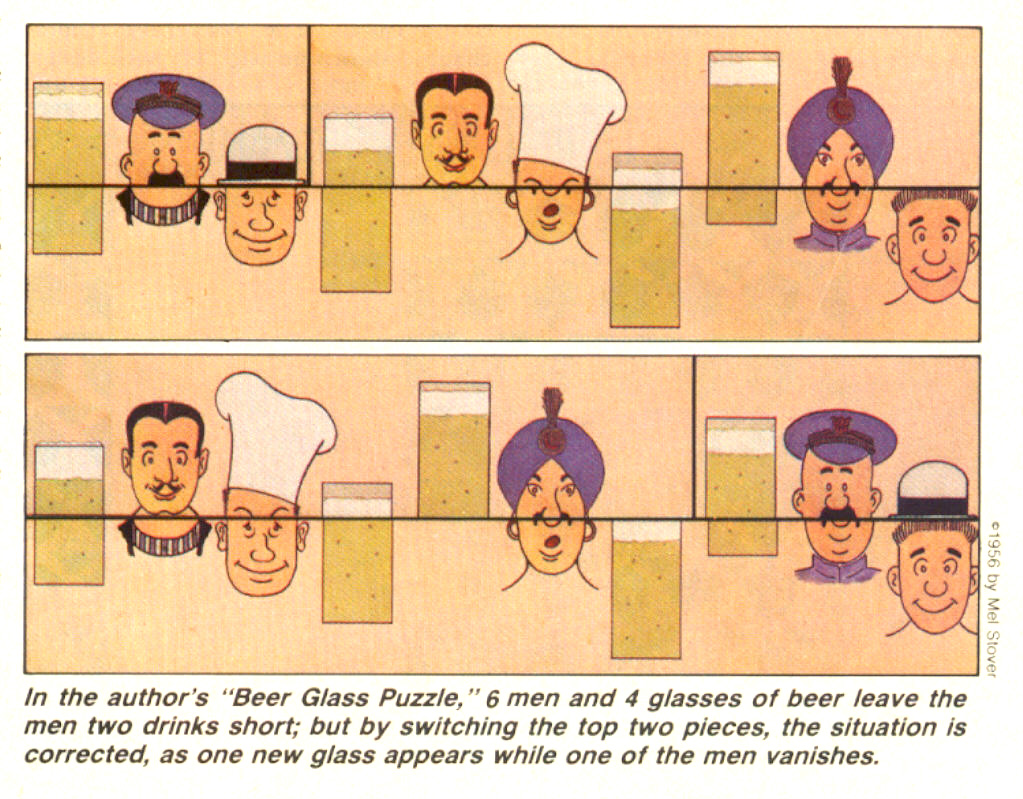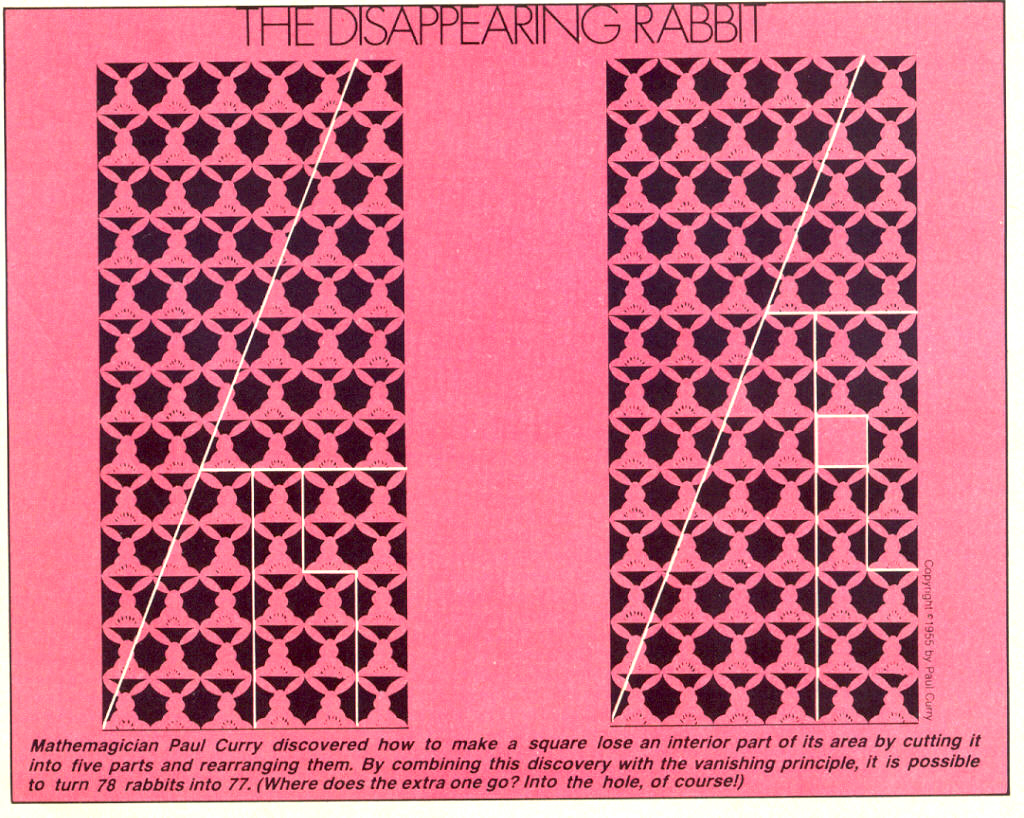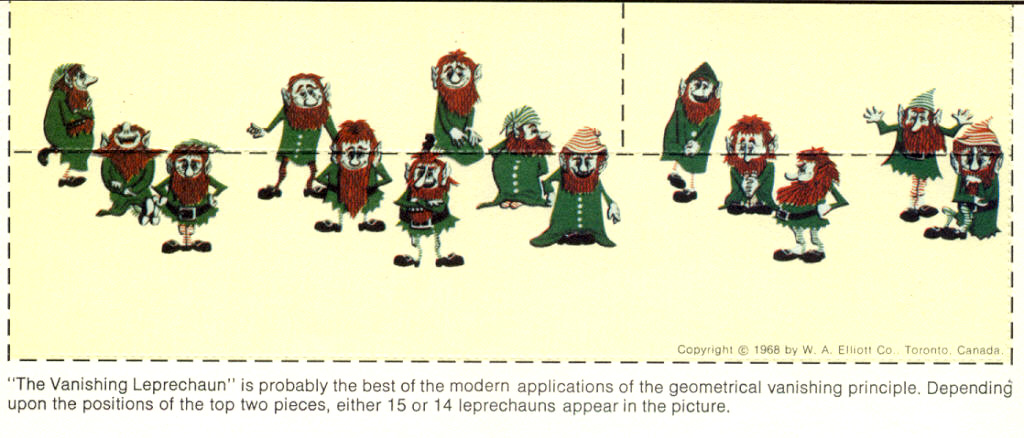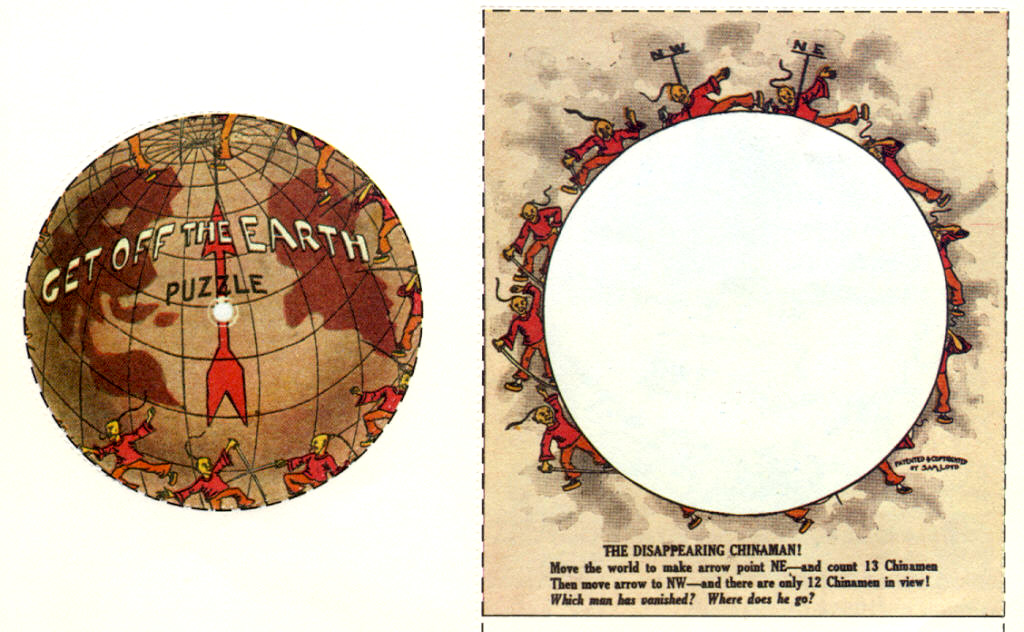Most optical illusions fail to hold our attention for long because the
secret of their trickery is generally transparent. But the remarkable
constructions known as "geometrical vanishes" are so confounding that
they continue to delight, amaze, and cause people to question their own
sense of sight, even after the mechanics of the puzzles have been explained.
A simple example of this type of paradox is "Pencils," which I designed in
1956. When the three pieces making up the picture of 13 pencils are assembled as
shown above teft, 7 red pencils and 6 blue pencils are in view. But when the
positions of the two bottom pieces are switched as shown above right, the
picture mysteriously becomes one of 6 red and 7 blue pencils. As is evident from
the simplicity of the drawing, no artistic trickery of any kind is involved in the
illusion. The natural (and misleading) question to ask your friends when showing
them the puzzle for the first time is, "Which pencil changes color?"
